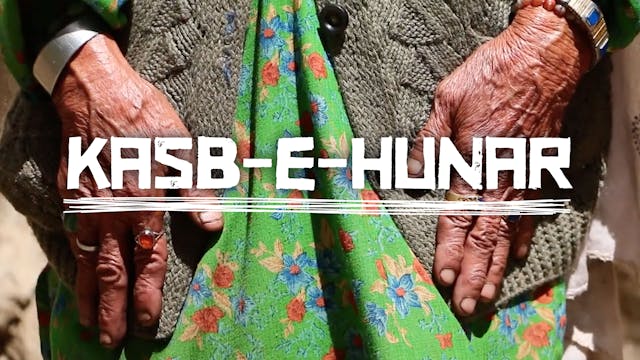Sindhi Ajrakh
Pakistan Zindabad
•
Documentary
Traditionally, Ajrak is the name of a block printed cloth with deep crimson red and indigo blue background, bearing symmetrical patterns with interspersed unprinted sparkling white motifs. An ancient craft, the history of the Ajrak can be traced back to the civilizations of the Indus Valley that existed around 2500 BC-1500 BC.
The term “Ajrak”, may be derived from “Azrak”, meaning blue in Arabic, as blue happens to be the one of the principal colours in Ajrak printing. More than a fabric, Ajrak is a Sindhi tradition; found in daily usage such as hammocks and bedsheets to duppattas, scarves, and even gifts as a token of respect. The highly valued Ajrak has also been made in Kutchfor the Maldharis or cattle herders’ communities since the time Khatris migrated from Sindh in the 16th century. The Khatri community, whose name means “one who fills or changes colours,” printed cloth with the locally available natural dyes and water from the Dhamadka, the river that gave their village its name.
Up Next in Pakistan Zindabad
-
The Citizens Archive of Pakistan
The Citizens Archive of Pakistan (CAP) is a non-profit organisation dedicated to cultural and historic preservation operating in Karachi, Lahore, and Islamabad. We seek to educate the community, foster an awareness of our nation's history, and instil pride in Pakistani citizens about their herita...
-
Kasb-e-Hunar (Skilled Enclave)
Kasb-e-Hunar is a sensory film showing a visual documentation of Shu (woollen cloth) making and short interviews with an elderly artisan community from the villages of Madaklasht and Garam Chashma in Chitral valley. It invites the audience in to engage with the past and present and seeks to provo...
-
Salam Pakistan
When we told our friends and family about our decision to travel to Pakistan for work, some of them asked us if we were crazy, while others asked: “Is it safe to go there?” Let me show you what we witnessed. A place that, in my experience, eluded completely the distorted Western media depictions....



